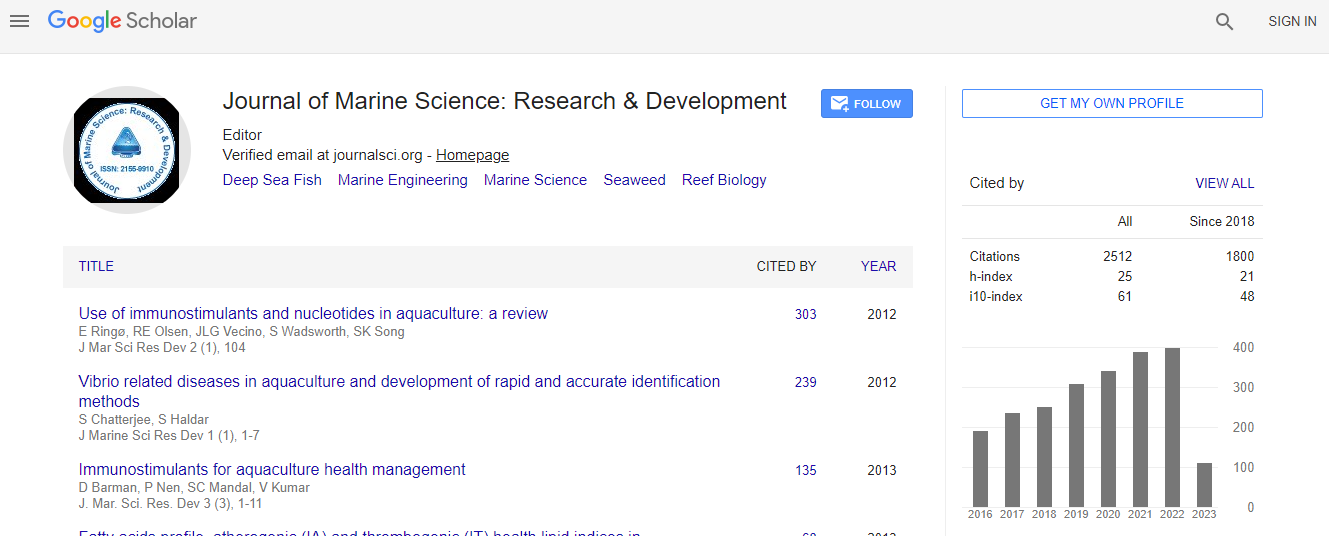Research Article
Floating Desalination and Water Pumping Plants as Harmful Algal Bloom Control Technologies
Kevin C Owen1*, Jenna L Owen2 and Daniel P Owen31Höegh LNG AS, 15469 Osprey Glen Drive, Lithia, FL, USA
2Tindale-Oliver and Associates, Tampa, FL, USA
3Department of Biological Sciences, Florida State University, Tallahassee, FL, USA
- *Corresponding Author:
- Kevin C. Owen
Höegh LNG AS
15469 Osprey Glen Drive
Lithia, FL, USA
Tel: 813-685-0353
E-mail: kowen1972@yahoo.com
Received date: September 04, 2013; Accepted date: November 27, 2013; Published date: December 05, 2013
Citation: Owen KC, Owen JL, Owen DP (2013) Floating Desalination and Water Pumping Plants as Harmful Algal Bloom Control Technologies. J Marine Sci Res Dev 3:140. doi:10.4172/2155-9910.1000140
Copyright: © 2013 Owen KC, et al. This is an open-access article distributed under the terms of the Creative Commons Attribution License, which permits unrestricted use, distribution, and reproduction in any medium, provided the original author and source are credited.
Abstract
Harmful Algal Blooms (HABs) have significant ecological and economic effects on the marine environment and use. In recent years, researchers have been increasingly developing and testing methods to treat and control HABs. General categories or strategies proposed as HAB control technologies include mechanical, biological, chemical, genetic, and environmental controls.
The authors of this paper suggest using floating desalination plants to treat or control red tides. HAB producing dinoflagellates have been shown to be sensitive to physical and chemical changes in the environment, such as changes in temperature and salinity. The typical response of dinoflagellates is to form cysts that then settle out of the water column.
The discharges from a floating desalination and water pumping plant can rapidly change the temperature and salinity in the water column. These changes could be expected to induce encystment in the dinoflagellate species that form cyst and could cause mortality in those species unable to form temporary cysts. Preventing population growth, inducing encystment, or causing mortality would effectively end a HAB.
Discharges from a desalination plant are temporary in nature and include hypersaline water, freshwater
(hyposaline water), and heated warmer. By discharging the heated hyposaline water at a low depth in the water column, due to its lower density than seawater, the discharge would move upward towards the surface. Since the hypersaline water would be denser than seawater, by discharging it at the surface, the hypersaline water would sink. In environments where a stratified water column exists, pumping water could disrupt the stratification without the need for additional desalination. The discharges from a floating desalination plant would stress the red tide with
surfacing warmer fresh water and sinking hypersaline water. The stresses caused by these disturbances can disrupt
a HAB. These temperature and salinity changes that could be created by a floating desalination plant would be achieved without the discharge of chemicals or other materials that could have other detrimental environmental impacts.
A good aspect of this treatment is that, with continued mixing after discharge, the water would return to ambient temperature and salinity relatively quickly with minimal effect on the marine environment. Since the dinoflagellates
have been shown to react quickly to environmental changes, the temperature and salinity of the discharges could be controlled to reduce adverse impacts on other marine organisms. B

 Spanish
Spanish  Chinese
Chinese  Russian
Russian  German
German  French
French  Japanese
Japanese  Portuguese
Portuguese  Hindi
Hindi 